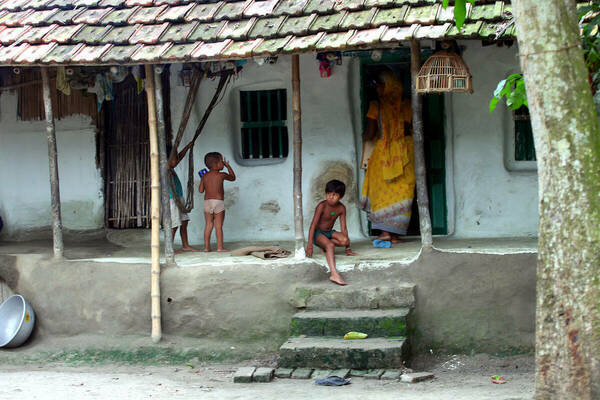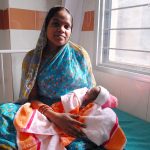In India, iron-deficient anemia (IDA) among children less than five years old is on the rise, leading to higher “hidden” morbidity and mortality. IDA causes headaches, fatigue, and developmental delays, including physical and cognitive impairment among children. Anemia prevalence in young children can be as high as 70% in many rural parts of India.
A study published in Economics Letters by researchers at the University of Notre Dame reveals an intergenerational link of anemia between mother and child: Mothers with anemia during pregnancy are more likely to pass on the condition to their children.
Santosh Kumar, associate professor of development and global health economics at the Keough School of Global Affairs, made the discovery while working closely with Dr. Bernard Nahlen, director of the Eck Institute for Global Health and professor of biological sciences. Together, Kumar and Nahlen analyzed data from the National Family Health Survey (NFHS), a multi-round survey conducted throughout India to provide state and national information on the health and well-being of Indian families. The results of their analysis may help in the creation of preventative health policies to reduce the long-term impacts of anemia.
Kumar and Nahlen established a causal relationship between the anemic status of mother and child. The data was collected from the 2015-16 NFHS, which had gathered samples from over half a million women and households. Of those sampled, 58% of children and 56% of women were categorized as anemic.
A statistical analysis method known as an instrumental variable estimation was then used to identify a causal relationship between mother and child anemic status, which factored in the mother’s height and the family’s socioeconomic status. The analysis categorized the anemic status of mothers and children based on the hemoglobin cutoff developed by the World Health Organization. Children were categorized as anemic if the hemoglobin levels were less than 11.0 grams per deciliter (g/dL) while the cutoff for pregnant and non-pregnant women is 11.0 g/dL and 12.0 g/dL, respectively.
The results show a strong correlation between the hemoglobin levels of mothers and children. For example, a one-gram increase in hemoglobin levels for a mother increases hemoglobin levels in children by 0.4 g/dL. Similarly, children of anemic mothers are 26% more likely to be anemic.
Kumar, who leads the Global Health Economics and Policy course which is taught each spring as part of the Master of Science in Global Health and Master of Global Affairs, explains that biological and social factors play an important role in determining which mothers develop and pass on anemia. Changes in food systems—including the increasing convenience of processed foods over natural foods and the decrease in the availability of nutrient-rich staple foods—are making it harder for mothers to consume the recommended amounts of iron required to prevent the risk of anemia.
Kumar further explains that since early life health conditions affect employment, wages, and chronic diseases in adulthood, “It is possible that the genesis of poverty can be traced back to the high level of morbidity caused by micronutrient deficiencies that we see very early in life.”
Micronutrients, including iron, are vital for human growth and development. In communities where women cannot access micronutrient-rich foods, low hemoglobin levels for nine months of pregnancy will transmit the same deficiencies to growing babies. The household dietary patterns that limit the mother’s nutrition while pregnant are likely to become part of the young child’s daily food routine.
If children can begin their lives healthier, we can improve their future and the lives of their future children. This can break the cycle of poverty.
The study will contribute to future research projects planned in Sub-Saharan Africa. By identifying correlations between women and their children’s health status, the planned studies will work to design early intervention models, providing state and local nutritional recommendations to families. Kumar hopes that applying preventative health policies to reduce anemia will improve early child development.
“If children can begin their lives healthier, we can improve their opportunities for success, we can improve their future, and we can improve the lives of their future children,” said Kumar. “This can break the cycle of poverty.”
Nahlen, who has spent years researching health conditions that disproportionately impact people in under-resourced communities, views the interdisciplinary project as an essential step toward designing preventative actions to reduce anemia. “Any efforts to reduce health disparities requires a better understanding of the complex factors associated with intergenerational transmission of poor health,” he said. “This provides the basis for the development of new tools and strategies to improve the future health of these communities.”
For more information on other global health research projects and opportunities, please visit the Eck Institute for Global Health website.
Originally published at globalhealth.nd.edu on January 5, 2024.



